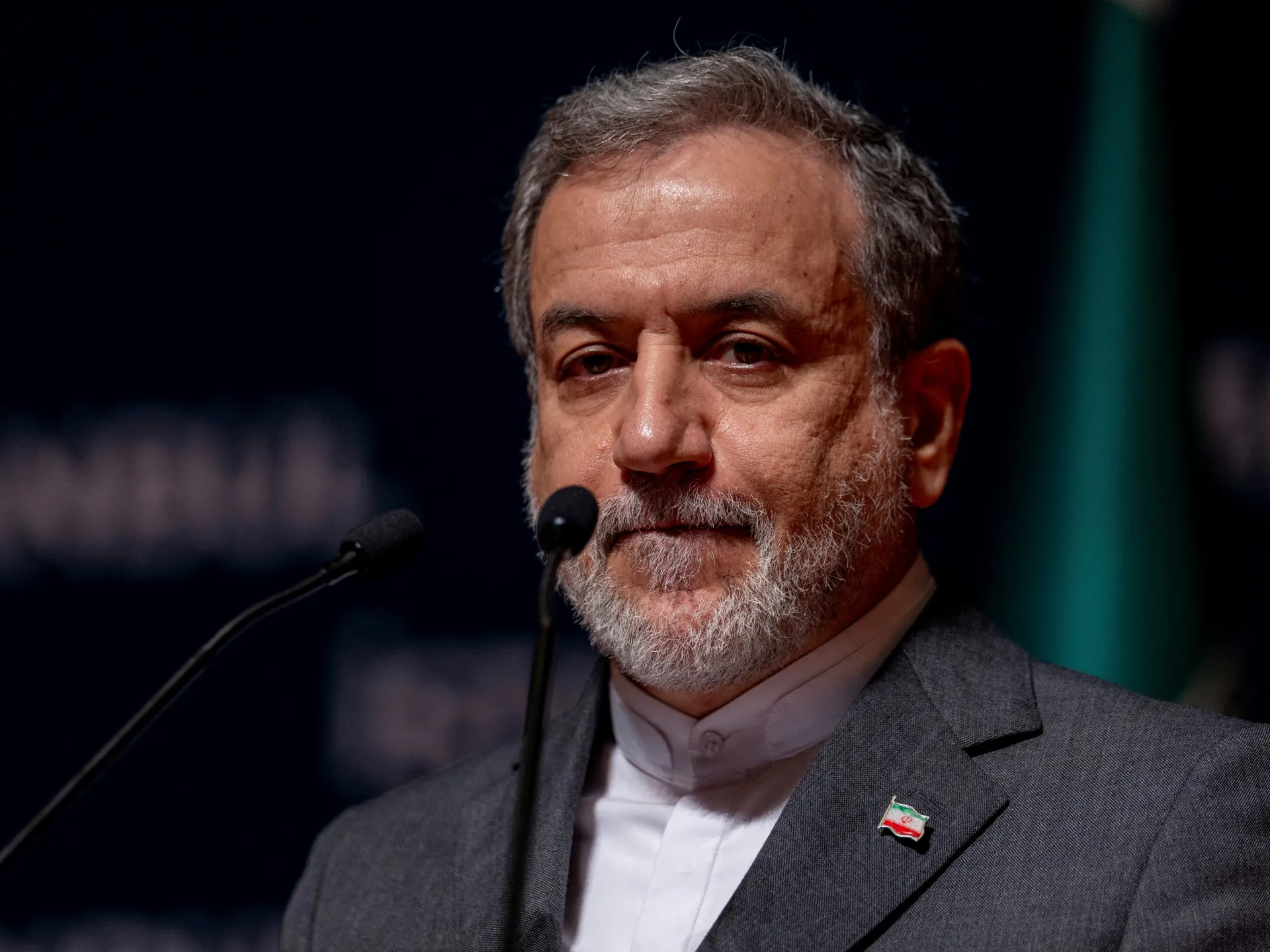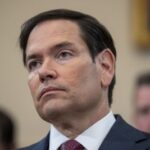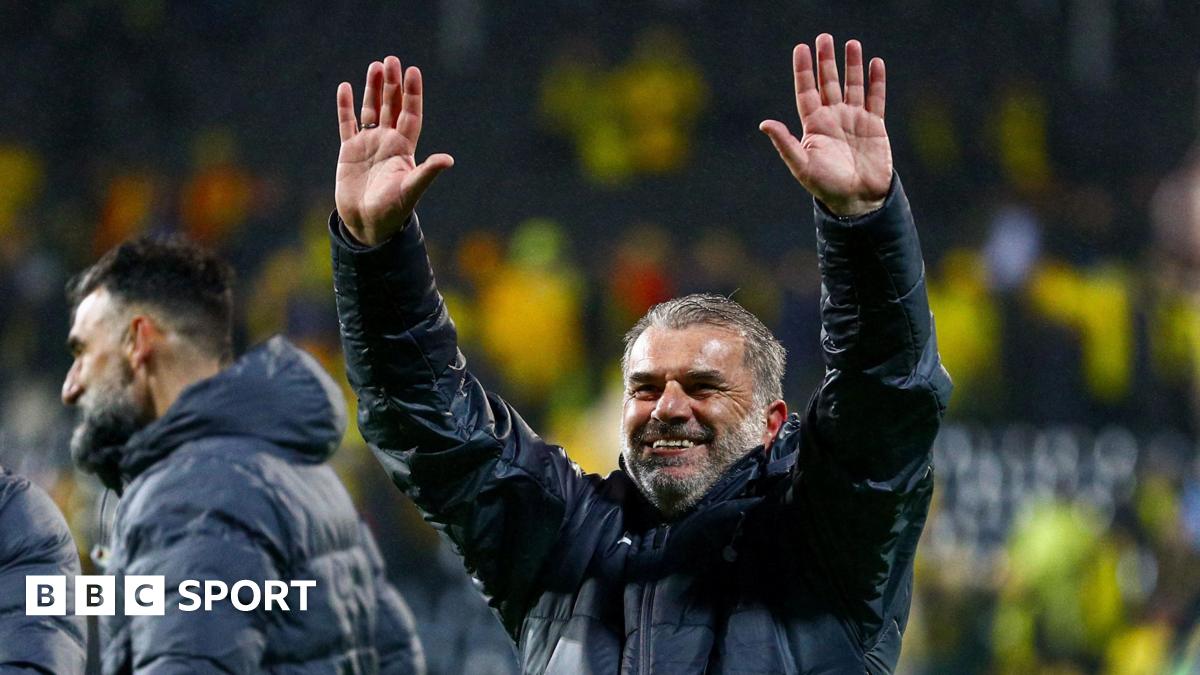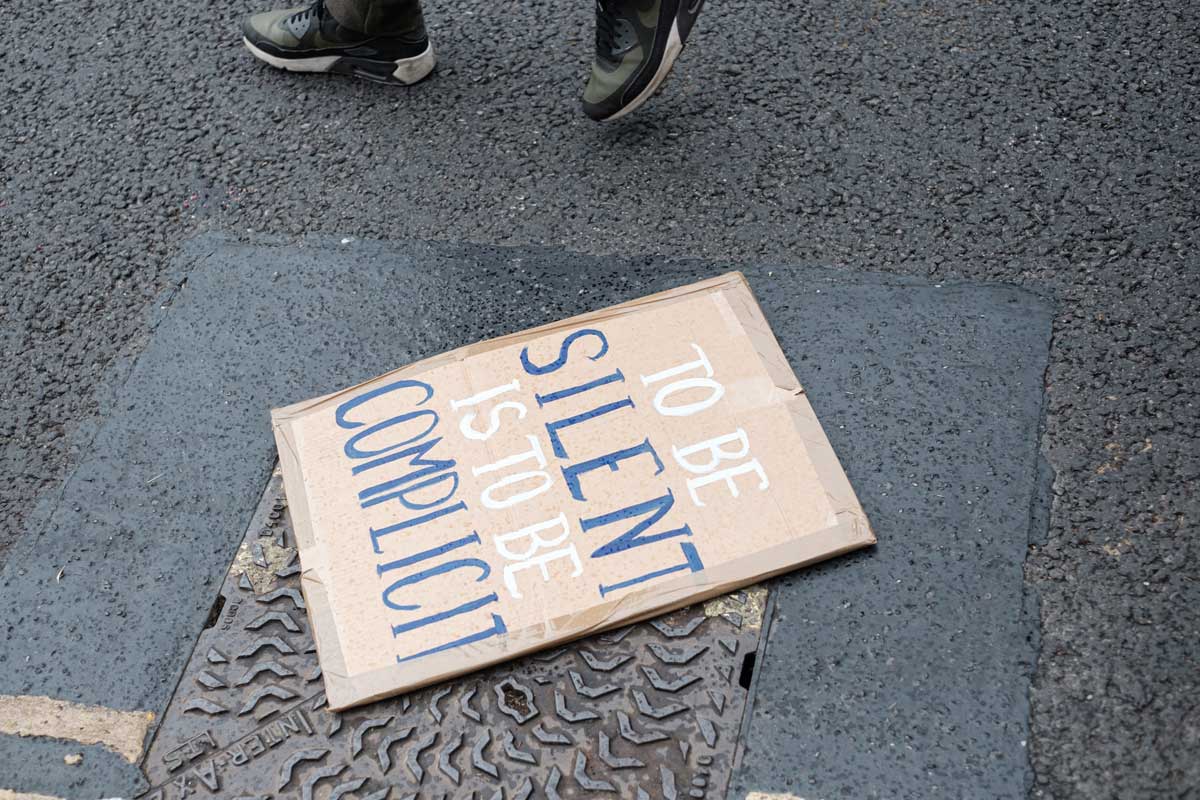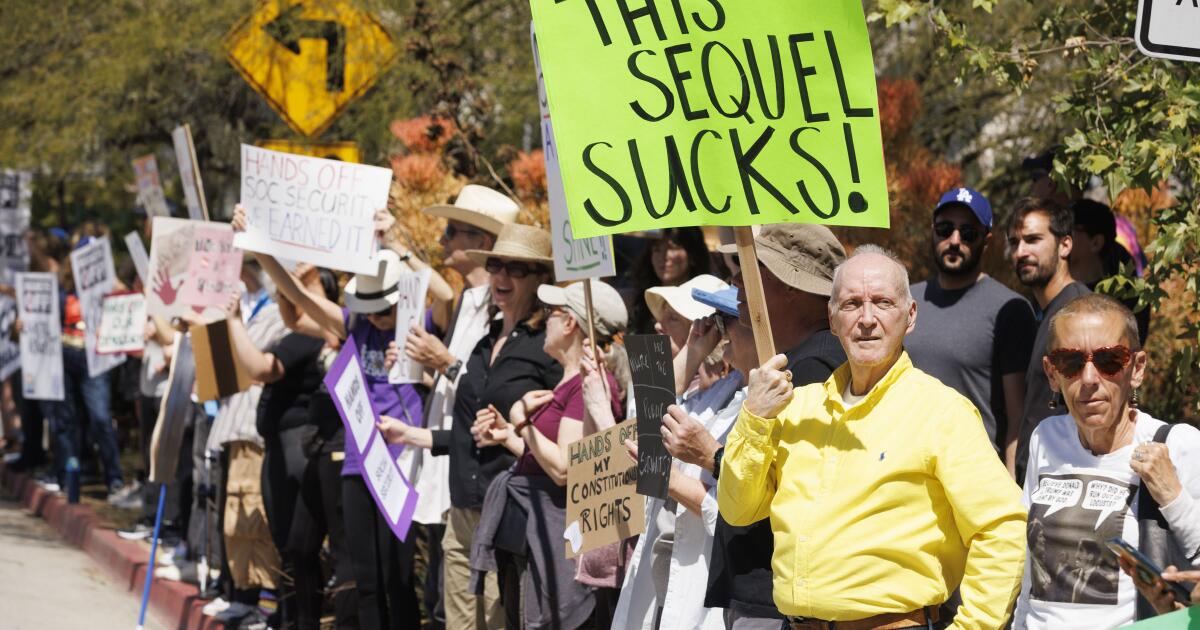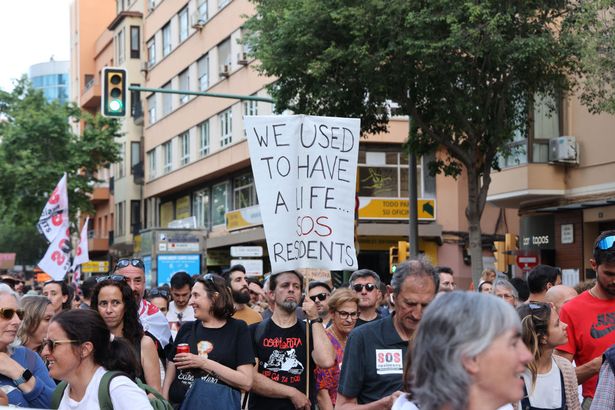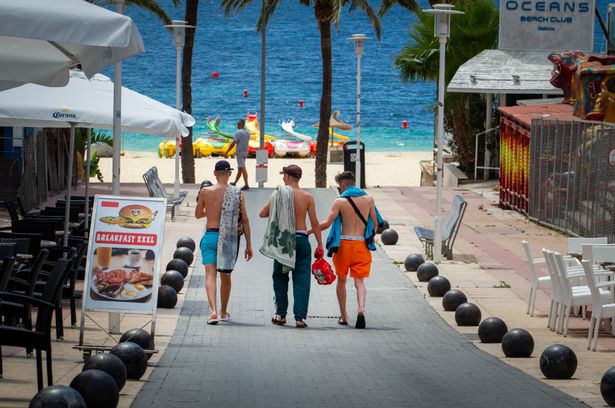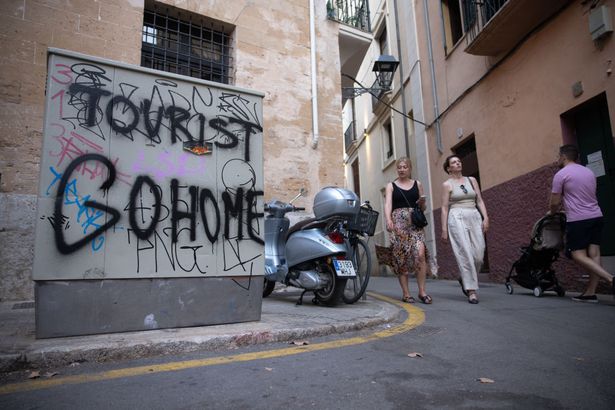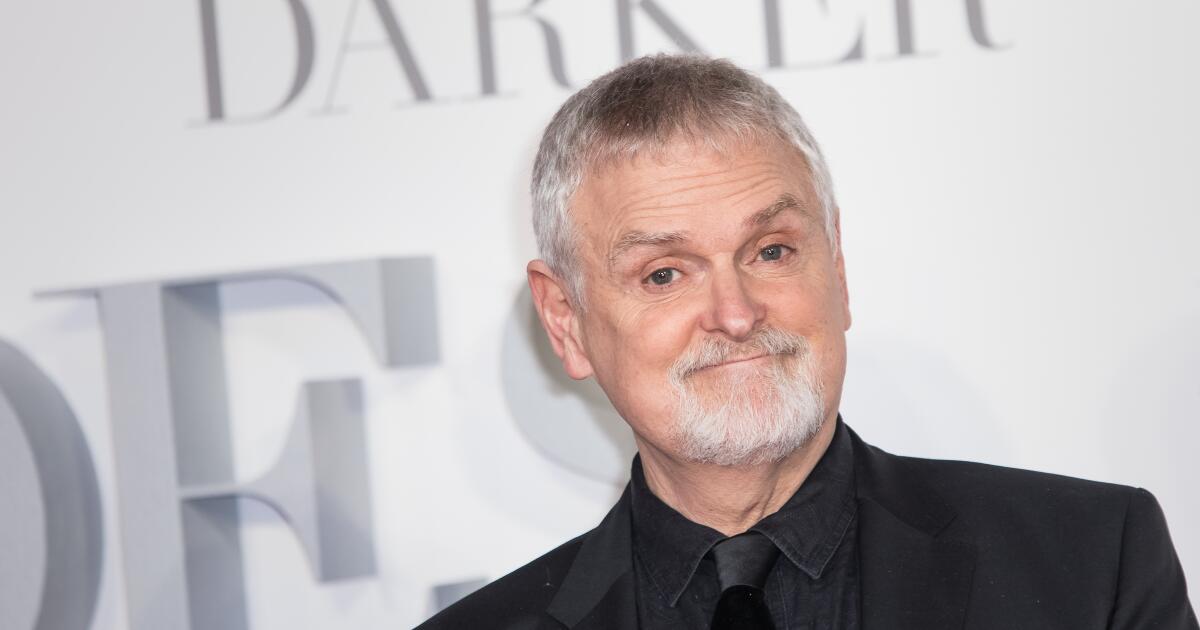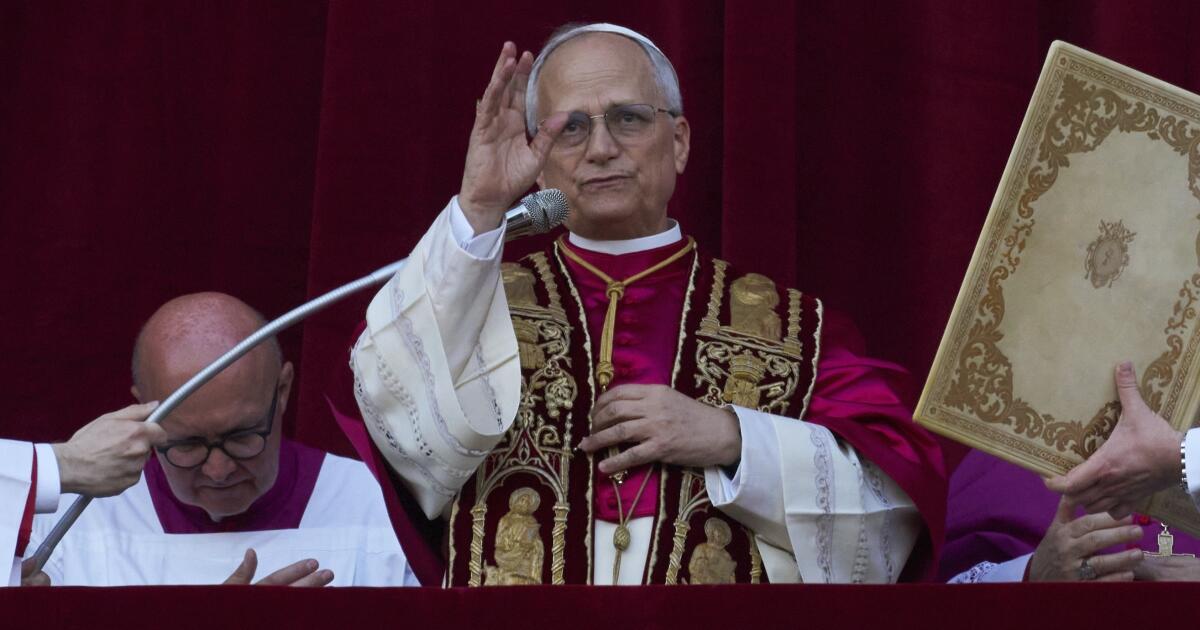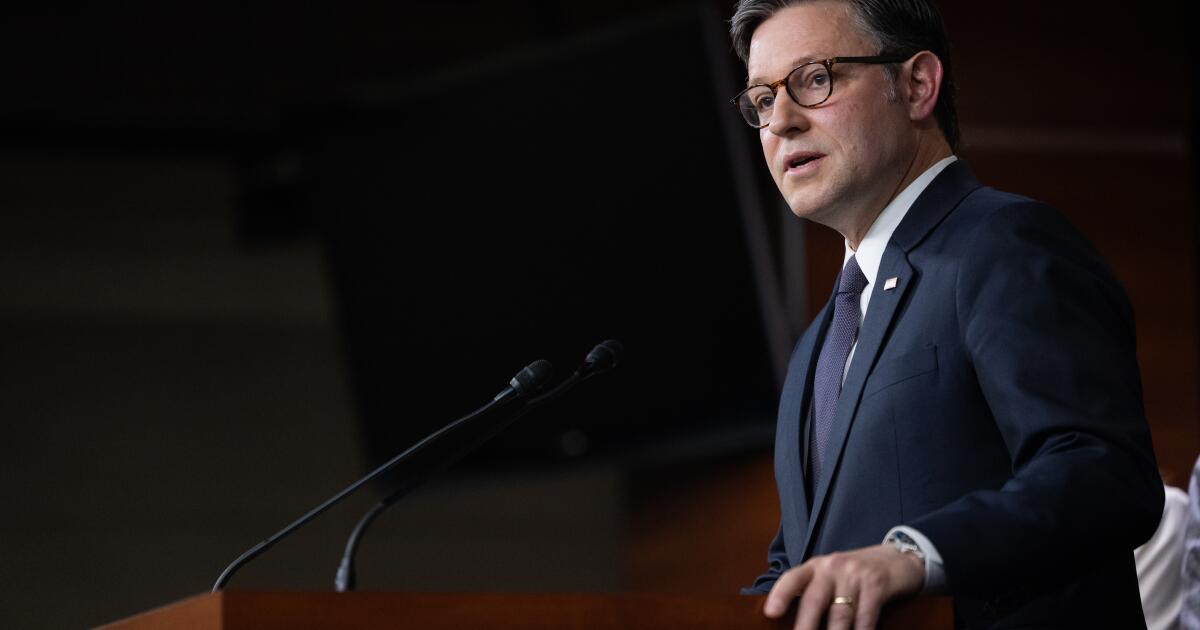Ange Postecoglou: Tottenham boss hits back at critics as Spurs reach Europa League final
“If it’s so easy to get to a final, then why doesn’t everyone who finishes in the top three do it?”
In Norway, boss Ange Postecoglou took aim at Tottenham’s critics after they reached the Europa League final as he remained on course to continue his record of winning a trophy in his second season.
Spurs eased past Bodo/Glimt 2-0 in the second leg of their semi-final in the Arctic Circle to complete a 5-1 aggregate victory on Thursday.
Dominic Solanke and Pedro Porro sent Spurs to the final, where they will face Manchester United in Bilbao on 21 May.
Tottenham are 16th in the Premier League after a poor domestic season and are chasing their first major trophy since 2008.
Postecoglou has come under huge criticism for Tottenham’s form, despite losing a number of senior players to injury. They won in Norway without James Maddison and Lucas Bergvall – both out for the season – with Son Heung-min also missing.
At times he has been mocked after stating, accurately, he wins trophies during his second season at a club.
In the Aspmyra Stadion, minutes after seeing his team reach the final, he came out fighting again.
“It’s going to upset a lot of people isn’t it,” Postecoglou said. “The debate’s now raging. The latest one is that neither of us will be able to get a trophy if we win, they’re just going to take a team photo because we’re not worthy.
“I mean, who cares if we’re struggling in the league? It’s a separate thing. It’s got nothing to do with league form.
“I couldn’t care less who’s struggling and who’s not. I think both us and Manchester United have earned the right to be there.”
It is Tottenham’s sixth European final – their last was in 2019 when they lost to Liverpool in the Champions League.
Since winning the 2008 Carabao Cup Spurs have lost three finals and been beaten in three semi-finals. They have also reached four FA Cup semi finals without progressing.
The club has not lifted the Europa League in 41 years, since beating Anderlecht to win what was the Uefa Cup at the time.
“I’ve said all along that this is important,” Postecoglou continued. “What’s happening now is people are fearing that – that it actually might happen, and let’s see how we can tear it down somehow and diminish it somehow by saying it’s been a poor season and we don’t deserve this or we don’t deserve that, or somehow comparing us to Man United.
“Maybe if we had Man United’s success then maybe I’d have a different view. So, of course it’s massive. Of course it is, because you have to frame it against what this club has been through over the last 15 or 20 years and what the supporters have been through.
“We’ve given them some real hope and something to dream about that we can do something special this year.”
FAA reveals plan for new air traffic control system

May 8 (UPI) — The nation’s aging air traffic control system will be replaced with one that is aimed at 21st-century needs while improving safety, Transportation Secretary Sean Duffy announced Thursday.
“We are seizing a once-in-a-generation opportunity to build a brand new, state-of-the-art air traffic control system,” Duffy said in a Federal Aviation Administration news release.
“Decades of neglect have left us with an outdated system that is showing its age,” Duffy said. “Building this new system is an economic and national security necessity, and the time to fix it is now.”
The new systems will enhance safety, lessen delays, and unlock the future of air travel, the news release stated.
It also will ensure air traffic controllers have a reliable system to effectively manage and direct air traffic at the nation’s airports.
Duffy said a coalition that includes labor and industrial interests is helping to design a modern system that greatly improves upon the existing one.
Industry experts in March affirmed the need to modernize the nation’s air traffic control system.
The proposed plan has four components for improving infrastructure: communications, surveillance, automation and facilities.
It seeks to replace old telecommunications systems with new fiber, wireless and satellite technologies at more than 4,600 sites and install 25,000 new radios and 475 new voice switches.
The plan also requires replacing 618 radar systems that have exceeded their intended life cycles.
The number of airports participating in the SurfaceAwareness Initiative is to increase to 200 and reduce the number of close calls between aircraft.
The FAA also seeks to build six new air traffic control centers, which would be the first new ones in six decades.
Installing new hardware and software for all air traffic control facilities will standardize their operations, while adding 174 new weather stations in Alaska will improve air travel safety there.
Aerospace accounts for 5% of the nation’s gross domestic product, which equals $1.25 trillion and supports more than 2 million jobs, according to the FAA.
Aviation “is one of the nation’s most important national security, economic and geostrategic assets,” the FAA’s BrandNew Air Traffic Control System report says.
“It is critical the United States acts now to invest and modernize a National Airspace System that supports the future and moves beyond the 1960s,” it concludes.
No price tag or timeline has been placed on the plan, which was announced after the Trump administration in February fired hundreds of FAA probationary workers.
This Isn’t a Flaw in the System—It Is the System
We live in a world where racism isn’t just a set of isolated incidents but a pervasive thread woven through every major system and institution that shapes our daily lives. The evidence surrounds us, yet many “fail to see it.” The roots of racism are deeply ingrained into the fabric of society. For example, something as simple as redlining, where financial institutions deny loans for specific neighborhoods based on race, is one such tool of racism. The systems around African-Americans were not designed to uplift but rather to suppress their existence. To demand equality, justice, and human rights, we must confront the inequalities embedded within our economic, legal, educational, healthcare, and political systems and work to deconstruct the structures that have long marginalized Black communities.
One of the most glaring manifestations of systemic racism is the racial wealth gap between African-Americans and white Americans. According to a recent article published by the National Community Reinvestment Coalition (NCRC), the median wealth of Black households is just $9,000, compared to $160,200 for white households. This vast disparity is not simply the result of individual choices or personal shortcomings but stems from centuries of exclusionary economic policies like slavery, Jim Crow laws, and discriminatory housing practices like redlining. As a result, African-American families have been systematically denied opportunities to build wealth through homeownership, business ownership, and access to financial resources.
Educational inequality is another major facet of systemic racism that has profound long-term effects on the African-American community. Despite the progress made in desegregating schools, the reality is that African-American children are still more likely to attend underfunded schools. According to a study done by EdBuild, schools that are predominantly white school districts receive $23 billion more than those in districts where the students are not predominantly white. This means fewer resources, less support, and a lower quality education, creating a cycle of limited educational achievement that would hinder economic mobility. School funding is often tied to local property taxes; according to the Congressional Black Caucus Foundation, 81% of school funding comes from property taxes. This means that communities with lower-income populations—disproportionately populated by Black families— have far fewer resources than affluent, predominantly white districts. The lack of access to quality education and the disproportionate funding faced by Black students has long-term consequences for their future success, limiting access to higher education and career opportunities.
The racial inequities in the healthcare system are stark and continue to aggravate the health disparities experienced by African-Americans. African-Americans are also more likely to suffer from chronic conditions like hypertension, diabetes, and asthma, yet are less likely to receive appropriate care for these conditions. The higher rates of poor health outcomes for African-Americans are attributed to multiple factors, including lack of access to quality healthcare, economic barriers, and institutional biases within the medical field. Additionally, African-American women are three times more likely to die of pregnancy-related causes compared to their white counterparts. This crisis is driven by factors such as implicit bias in healthcare, where doctors may underestimate the pain of Black patients or fail to treat them with the same urgency as white patients. Despite improvements in healthcare access over the past several decades, these racial disparities persist and continue to contribute to poor health outcomes faced by African-Americans.
Despite growing support for addressing systemic racism, some argue that institutional inequalities are a thing of the past and that modern society offers equal opportunities to all. People against structural change often claim that disparities in wealth, education, and incarceration rates are due to individual choices rather than systemic barriers. They point to examples of successful Black Americans—CEOs, politicians, and entertainers—as evidence that racism is no longer a defining factor in American society. Some even argue that programs aimed specifically at correcting racial inequalities are themselves discriminatory, advocating instead for “colorblind” policies that treat all individuals the same. But this argument crumbles under the weight of historical context and current data. The presence of a few high-profile Black success stories does not erase centuries of legally sanctioned oppression or the enduring structures that continue to disadvantage millions of Black Americans. Relying on exceptionalism to dismiss systemic issues is dishonest—it ignores the reality that for every one Black millionaire, there are countless others facing discrimination in housing, education, employment, and healthcare. “Colorblindness” sounds appealing in theory, but in practice, it erases the unique challenges that the African-American community faces, making it harder, not easier, to achieve real equity.
Deconstructing institutionalized racism is not just a political task—it is a moral imperative. For centuries, African Americans have carried the weight of a system built to exclude them while being told to be patient, to work harder, and to wait for justice that never fully arrives. The pain is generational. The harm is measurable. And the silence of inaction is deafening. We cannot repair what we refuse to acknowledge. True justice requires us not to ignore race but to confront how it has been weaponized for generations. To suggest otherwise is not only naive—it’s dangerous. It’s time to rebuild a society that doesn’t just promise equality but delivers it.
Major retailer to roll out self-checkouts to 100 more stores and it’ll divide shoppers
A MAJOR retailer has revealed a plan to roll out self checkouts to more than 100 stores – and its proving divisive with shoppers.
Homeware experts Dunelm will have unveiled the new till systems in more than half of its UK stores by the end of 2026.
Dunelm announced the move in a financial update to shareholders, explaining it was focused on “harnessing our operational capabilities”.
It has since revealed that trials had been held for 12 months and generated positive feedback.
A Dunelm spokesperson said: “We have been trialling assisted self-service tills in a number of our stores over the past year, receiving some very good feedback from customers who have welcomed the ease, speed and convenience of this option.
“As a result, we will be rolling out to more stores in our estate in the future. We continue to offer regular tills across all our stores should customers prefer this option.”
Despite the store’s claims, self service checkouts have long proved divisive for consumers.
Dunelm’s Taunton store was among the first to see the new systems installed and a report in the local press attracted varied comments.
One reader said: “I will not be using them! I very much disagree with upper management’s underhand way of getting rid of staff so they get more money in their salary and they very rarely work properly anyway.”
When the news was first revealed another shopper said they “hate” self service tills and wanted “just regular” ones instead.
Another customer said they would only use it if they were given “a discount for doing someone’s job“.
While a third person said they “absolutely” hate them too.
Last month the boss of Booths supermarkets admitted that its customers were happier after the business took the decision to remove self-checkouts from stores.
Previously released data from The Grocer revealed that the checkouts could see service satisfaction scores fall by as much as 8%.
Last year, Asda also said it will put more staff on the tills as part of a £30m investment to get customers back in stores.
But, despite some negative reviews other stores are increasing their use of self checkouts.
Sainsbury’s is currently testing a giant hybrid self-scan till with a scanner on a moving conveyor belt.
This would give shoppers more space to scan and pack bigger trolleys.
Primark has also introduced self scanning tills across a number of its stores, alongside Zara and Berskha.
A full list of the Dunelm stores to receive the self-checkouts has yet to be revealed.
How to dodge the self checkouts
If you want to dodge the self checkouts, you may want to consider using scan as you go technology.
Scan as you go systems are the latest addition to the supermarket shopping experience with several retailers making them a permanent feature in big stores.
They allow customers to scan as they browse, either using their smartphone or a handheld device.
Then most shops allow you to check out at a completely different area to other shoppers, saving time in queues.
It means that shoppers can keep track of how much they’re spending as they go around the aisles, allowing you to budget and stick to your list.
It also means that you can bag your groceries as you wander around too – saving you even more time.
SAVE AT DUNELM
Kitting out a first home or giving your property a much-needed refresh doesn’t have to break the bank.
Dunelm frequently has sales and promotions giving you up to 75% off, especially at certain times of the year.
Keep an eye out for Black Friday and Boxing Day sales to bag a bargain.
Check the clearance page on the Dunelm website for huge discounts and the latest promotions.
You may also be able to combine these deals with other money-saving websites.
Cashback websites such as TopCashback may allow you to earn money back on your spending.
You could also get a free gift card worth £10 when you spend over £110 if you sign up to savings website Groupon.
Plus you can save by opting for free click-and-collect to avoid being hit with delivery fees.
Do you have a money problem that needs sorting? Get in touch by emailing [email protected].
Plus, you can join our Sun Money Chats and Tips Facebook group to share your tips and stories
Home Bargains is selling a £5 buy that makes ‘gardening a breeze’ – and will save your back this summer
GARDENING can be a great way to spend a warm summer’s day, but it can also quite a laborious activity.
A budget buy can save you the back pain of moving pots and other heavier items this summer.
So if you’re someone with a keen green thumb but have always been put off by the body aches caused from hauling around your materials, don’t worry.
An affordable item from Home Bargains is guaranteed to make gardening an easier task.
The Jardin Planter Caddy With Wheels is available in a set of two for just £4.98.
According to the product description, this buy “makes gardening a breeze”.
Read More On Home Bargains
“These lightweight caddies let you effortlessly move your heavy planters, giving you more time to style your garden just the way you like it,” manufacturers said.
You no longer have to strain yourself trying to move your heavy garden planters or pots.
Simply place them on the planter caddy and let it do all the hard work.
For extra ease, why not place your empty planter on the caddy and fill it to avoid any lifting.
This easy step will give you more time to style and select the perfect spot in your garden.
The caddy is described as “lightweight” and measures 18 centimetres in diameter, making it ideal for use with most planters.
As well as preventing back strain and speeding up the process, these caddies have additional benefits.
They can protect surfaces from scratches or leaks, keeping your floors and patios clean and intact.
And since back pain is a common complaint among gardeners, especially older people, this budget buy may be just what you need.
Home Bargains also has a budget-friendly buy that helps your knees while tending to your flower beds.
The budget retailer is also selling a budget buy guaranteed to brighten up your space.
Top 5 Spring Gardening Jobs
*If you click a link in this boxout, we may earn affiliate revenue
Nick Grey, Gtech Inventor and CEO shared the tasks to crack on with as Spring arrives.
1. Clean your garden
Make sure to clear away all leaves, soil and plant debris from your patios and flower beds; this creates a healthier environment for new growth, especially as we get into the summer months. Gtech’s Garden Safety Kit includes durable gardening gloves and safety glasses; perfect for comfortability whilst tackling those outdoor tasks.
2. Weeding
Early Spring is the best time to tackle weeds; if you can introduce some regular weeding into your routine, you can guarantee a tidy garden all year round.
3. Hedge maintenance
Spring is the ideal time to tidy up overgrown hedges and shrubs, as regular trimming ensures healthy growth and reduces pest issues. Using a tool like the Gtech Lightweight Hedge Trimmer can help to keep your greenery looking sharp and neat.
4. Composting
Starting a compost heap this spring is a pro-active, cost-effective way to harness nutritious soil for your plants and recycle organic waste that will benefit the overall health of your greenery and foliage.
5. Look after your lawn
Lawn care is hugely important in assuring your garden stays looking beautiful. Make sure to rake away any excess leaves and trim your grass routinely.
Another garden light from the store is described as having a “cute” twist.
And shoppers can also pick up a £9.99 novelty decor buy that adds character to flowerbeds.
A £7 gardening gadget is also available from Home Bargains and is guaranteed to transform your lawn.
Home Bargains shoppers can choose from a variety of 20 plants available for as little as £2.99.
Contributor: Why older Americans are Trump’s biggest nightmare
That there’s a spasm of dislike for Trump’s chaotic presidency is not news — new polls show Americans unhappier with this president at 100 days than any of his predecessors. Much of the attention has focused on his rapidly falling numbers with young voters (“Is Gen Z abandoning Trump?” Newsweek asked last week), but we’re seeing signs — in the data and on the streets — of something that may be an even bigger problem for the MAGA world. Older Americans are increasingly repelled by this guy.
Numbers first: If you look at the internals of, say, the most recent Marist poll, he does worst among members of the oldest age cohort: Only 37% of the greatest/silent generation — people in their 80s and 90s — approve of the president’s performance. Baby boomers — those, like us, in our 60s and 70s — aren’t far behind, with only 41% giving him the nod, compared to very nearly half of Gen X.
Meanwhile, anyone who’s taken part in protests against the administration around the nation can testify to the amount of gray hair in the crowd. We’ve marched in New York, New England and California in recent weeks, and large swaths of the crowd definitely qualify for senior discounts at the movies. Mark Engler, co-author of “This Is an Uprising,” about the rise of modern protest movements, wrote to us last week: “Here in Philly, the crowd made me feel like I was on the younger side, an increasingly rare experience now that I’m about to turn 50.”
All of this goes against the common wisdom: You’re supposed to get more conservative as you age, and isn’t Trump supposed to be taking people our age back to our happy youth by making America great again? But we aren’t surprised: We’ve spent the last three years organizing liberal and progressive Americans over the age of 60. They make it clear what’s going on.
Some issues are obvious: As Elon Musk and his minions mess with the Social Security Administration and the White House plans big Medicaid cuts, people of a certain age feel a rare combination of fear and anger. Two-thirds of older Americans rely on Social Security for more than half their income — we spent our entire working lives paying in, on the explicit promise that it would be there for us when we retire. Even those who have savings and investments are watching them tank amid Trump’s tariff chaos: If your 401k drops 10% when you’re 30, you may have a chance to make it back. But if you’re 75?
And it goes deeper than dollars. Older voters watching Musk and Trump’s Cabinet dismantle the federal government understand why those agencies were built in the first place. If you’re 40, the Clean Air Act may seem a little abstract, but that’s because it’s worked so well. If you’re 70 or 80 you remember smog-choked cities and rivers that caught fire, and you have no idea why anyone would want them back.
That sentiment goes for all kinds of things. Lani Ritter-Hall, a board member of our organization, wrote recently of her memories of being a “Polio pioneer” in 1954, lining up for the shots that changed childhood for the better. “I have that special memory of participating in a grand scientific experiment to benefit humanity.” How do you think she feels watching RFK Jr. blather on about vaccines? (We’re old enough to remember Kennedy’s father, by the way, and to mourn how far the apple fell from the tree).
We know from experience why the country had DEI programs, because we remember Jim Crow and its vestiges in segregated schools and neighborhoods. When the government removes lessons about the Tuskegee Airmen from air force training, or purges Jackie Robinson from a Department of Defense website, these are not figures of the impossibly distant past to us; the visceral anger of those whose lives paralleled these people are why the government had to backtrack.
Sometimes even the smallest things seem especially galling. President Trump’s celebration of the idea that henceforth kids would only have two dolls instead of 30 under the Christmas tree may be ridiculous (did anyone ever get 30 dolls for Christmas?) — but you know who really really likes spending their remaining money on toys? Grandparents.
One way of saying this is that the older you are, the longer your past, and so Trump’s assault on normalcy is especially egregious to us — we know he’s behaving in a way that no former president even imagined behaving.
Happily, we vote in higher numbers than any other age group, and we’ve got a longer future as activists than the president and his allies might imagine. If you turn 60 this year, chances are you’ll live another quarter century. Oh, and women — who dislike the president in larger numbers than men — will live longer still.
So expect another couple of decades of us causing good trouble, with all the skills and connections we’ve built over a lifetime. Trump is turning out to be our nightmare, and we’re more than willing to be his.
Akaya Windwood is a senior advisor at Third Act, which organizes older Americans for climate action and democracy protection. Bill McKibben is a founder of the group.
Insights
L.A. Times Insights delivers AI-generated analysis on Voices content to offer all points of view. Insights does not appear on any news articles.
Viewpoint
Perspectives
The following AI-generated content is powered by Perplexity. The Los Angeles Times editorial staff does not create or edit the content.
Ideas expressed in the piece
- Older Americans’ disapproval of Trump is driven by policy threats to Social Security and Medicaid, with two-thirds relying on these programs for over half their income.
- Environmental deregulation resonates strongly with seniors who remember pre-EPA pollution crises like smog-filled cities and flammable rivers.
- Vaccine skepticism from figures like RFK Jr. alienates those who lived through public health milestones like the polio vaccine rollout in the 1950s.
- Trump’s erosion of DEI initiatives and historical revisionism – such as removing references to Tuskegee Airmen – clashes with lived memories of segregation-era struggles.
- Older voters participate in protests and elections at higher rates than younger demographics, amplifying their political impact.
Different views on the topic
- Overall approval ratings for Trump remain stable among Republicans, with 84% of GOP-aligned voters supporting his performance[3], suggesting age-related dissent hasn’t destabilized his base.
- Economic policy critiques may be overstated: While 72% fear recession[1], Trump still outperforms congressional Democrats on trust to handle major issues[1].
- Low approval among seniors (37% in the oldest cohort) mirrors broader trends – his 42% overall approval at 100 days[4] shows challenges extend beyond age demographics.
- Partisan polarization remains the dominant factor: 90% of Democrats disapprove of Trump[3], indicating opposition is more party-driven than generationally specific.
- Disengaged voters – including some older Americans – initially boosted Trump but now show wavering support due to economic strains[2], complicating the narrative of uniform senior backlash.
CIF Southern Section boys’ tennis playoff scores and updated schedule
SOUTHERN SECTION BOYS TENNIS PLAYOFFS
WEDNESDAY’S RESULTS
FIRST ROUND
DIVISION 2
Edison, bye
Crean Lutheran 13, Camarillo 5
Foothill 12, Mater Dei 6
Windward 11, Dana Hills 7
Huntington Beach 14, Riverside King 4
Long Beach Wilson 13, Santa Monica 5
Oaks Christian 10, Walnut 8
Campbell Hall 15, West Torrance 3
Flintridge Prep, bye
Tesoro 9, Temecula Valley 9 (Tesoro wins on games 91-76)
Great Oak 12, Valencia 6
Whitney 11, El Dorado 7
Crescenta Valley 9, Santa Margarita 9 (CV wins on games)
Palm Desert 10, Santa Barbara 8
Webb 16, Burbank 2
Murrieta Valley, bye
DIVISION 3
Redlands, bye
Cate 12, Burbank Burroughs 6
Riverside Poly 11, Roosevelt 7
Sunny Hills 12, Xavier Prep 6
Temple City 12, Upland 6
Agoura 13, La Serna 5
Long Beach Poly 13, San Juan Hills 5
Geffen Academy, bye
West Ranch, bye
La Canada 11, Newbury Park 7
Westminster La Quinta 17, Chino Hills 1
Anaheim Canyon 12, Hemet 6
South Hills 13, Oak Hills 5
St. Francis 12, Redlands East Valley 6
San Marcos 18, Fairmont Prep 0
La Quinta, bye
DIVISION 4
Oxford Academy, bye
Villa Park 11, Alta Loma 7
Temescal Canyon 14, Coachella Valley 4
Oakwood 9, Simi Valley 9 (Oakwood wins on games 80-77)
San Gabriel 12, California 6
Foothill Tech 12, Quartz Hill 6
Dos Pueblos 12, Golden Valley 6
Mayfair 12, Chaminade 6
Brea Olinda, bye
South Torrance 11, Chadwick 7
Placentia Valencia 10, Tustin 8
Buckley 13, La Sierra 5
Millikan 17, Apple Valley 1
Rowland 17, Arlington 1
Warren 10, Riverside North 8
Orange Vista, bye
DIVISION 5
Capistrano Valley, bye
Hart 13, Silverado 5
Keppel 13, Montclair 5
Los Amigos 16, Tarbut V’Torah 2
Trabuco Hills 16, Cerritos Valley Christian 2
Cerritos 16, Yucaipa 2
Hesperia 11, Rancho Mirage 7
Thacher 16, Kaiser 2
Pasadena Poly 11, San Dimas 5
Culver City 14, Adelanto 4
Bishop Montgomery 12, Aquinas 6
Laguna Blanca 9, Liberty 9 (Laguna Blanca wins on games 78-69)
Rosemead 12, Milken Community 6
Hacienda Heights Wilson 15, Ridgecrest Burroughs 3
La Salle 9, Segerstrom 9 (La Salle wins 11-7 in super tiebreakers)
Fullerton, bye
DIVISION 6
Carpinteria 11, Jurupa Valley 7
Maranatha 10, Lancaster 8
Yeshiva 13, Chino 5
Edgewood 11, Beaumont 7
Bolsa Grande 10, Duarte 8
Ontario 11, Cathedral City 7
Godinez 13, Santa Ana Valley 5
Ventura 12, Indio 6
Heritage 10, Valley View 8
La Mirada 9, Arroyo 9 (La Mirada wins on games 85-75)
Alhambra 14, Granite Hills 4
Beverly Hills 15, Victor Valley 3
Workman 9, Patriot 9 (Workman wins on games 77-73)
Jurupa Hills 11, Nogales 7
Kennedy 12, Santa Fe 6
Northview 11, Garden Grove Santiago 7
DIVISION 7
Arrowhead Christian, bye
Hueneme 16, Highland 2
Estancia 10, Summit 8
Garden Grove Santiago 12, Westminster 6
Marshall at Dominguez
Twentynine Palms 13, Lakeside 5
Baldwin Park 13, La Habra 5
Katella 13, Lynwood 5
Malibu 17, Desert Mirage 1
Rancho Alamitos at Knight
Anaheim 10, San Bernardino 8
Canyon Springs 17, Eisenhower 1
Elsinore 12, Riverside Notre Dame 6
Gahr 13, Palmdale 5
St. Monica Prep 11, Indian Springs 7
San Jacinto, bye
FRIDAY’S SCHEDULE
(Matches at 3 p.m. unless noted)
FIRST ROUND
OPEN DIVISION
Palos Verdes at University
Peninsula at Corona del Mar
JSerra at Beckman
Loyola at Harvard-Westlake
DIVISION 1
South Pasadena at Portola
Oak Park at Mira Costa
Brentwood at Marina
Sage Hill at Sherman Oaks Notre Dame
Claremont at Diamond Bar
Northwood at Arcadia
Los Osos at Troy
Corona Santiago at Woodbridge
SECOND ROUND
DIVISION 2
Crean Lutheran at Edison
Windward at Foothill
Long Beach Wilson at Huntington Beach
Campbell Hall at Oaks Christian
Tesoro at Flintridge Prep
Great Oak at Whitney
Palm Desert at Crescenta Valley
Webb at Murrieta Valley
DIVISION 3
Cate at Redlands
Riverside Poly at Sunny Hills
Temple City at Agoura
Long Beach Poly at Geffen Academy
La Canada at West Ranch, Thursday
Anaheim Canyon at Westminster La Quinta
St. Francis at South Hills
San Marcos at La Quinta
DIVISION 4
Villa Park at Oxford Academy
Temescal Canyon at Oakwood
San Gabriel at Foothill Tech
Dos Pueblos at Mayfair
South Torrance at Brea Olinda
Buckley at Placentia Valencia
Millikan vs. Rowland, TBA
Warren at Orange Vista
DIVISION 5
Hart at Capistrano Valley
Los Amigos at Keppel
Trabuco Hills at Cerritos
Hesperia at Thacher
Pasadena Poly at Culver City
Bishop Montgomery at Laguna Blanca
Hacienda Heights Wilson at Rosemead
La Salle at Fullerton
DIVISION 6
Carpinteria at Maranatha
Yeshiva at Edgewood
Bolsa Grande at Ontario
Godinez at Ventura
Heritage at La Mirada
Beverly Hills at Alhambra
Jurupa Hills at Workman
Northview at Kennedy
DIVISION 7
Hueneme at Arrowhead Christian
Estancia vs. Garden Grove Santiago, TBA
Twentynine Palms vs. Dominguez/Marshall
Baldwin Park at Katella
Malibu vs. Knight/Rancho Alamitos
Canyon Springs at Anaheim
Elsinore at Gahr
St. Monica at San Jacinto
Note: Quarterfinals in Divisions 1-7 May 12; Semifinals in all divisions May 14; Finals in Divisions 4-7 on May 16 at The Claremont Club; Finals in Open-Division 3 on May 16 at University of Redlands.
Israel retrofitting DJI commercial drones to bomb and surveil Gaza | Israel-Palestine conflict News
The Israeli military has been altering commercial drones to carry bombs and surveil people in Gaza, an investigation by Al Jazeera’s Sanad verification agency has found.
According to Sanad, drones manufactured by the Chinese tech giant DJI have been used to attack hospitals and civilian shelters and to surveil Palestinian prisoners being forced to act as human shields for heavily armoured Israeli soldiers.
This is not the first time DJI drones have been modified and used by armies. There were similar reports about both sides of the Russia-Ukraine war in 2022.
At the time, DJI suspended all sales to both countries and introduced software modifications that restricted the areas where its drones could be used and how high they could fly.
However, DJI has not stopped selling drones to Israel.

Israel’s use of DJI drones
The Israeli army’s use of DJI drones is not new.
By 2018, DJI drones were reportedly in extensive use across numerous divisions in the Israeli military. The Israeli campaign group Hamushim found evidence that Israeli military-trained operators were using DJI’s Matrice 600 model to drop tear gas on civilian protesters during the following year’s Great March of Return in Gaza.
Despite their previous deployment by the Israeli military, their lethal use against civilians and protected targets in Gaza, as documented in this investigation, is unprecedented.
Al Jazeera has reached out to Israeli authorities to request comment on the findings of this investigation but has received no response by time of publication.

Sanad has documented several DJI drones that have been adapted for military use.
However, it is the powerful DJI Agras drone, developed for agricultural use, that is the most significant.
According to its manufacturers, the DJI Agras can carry a substantial payload and is capable of precision flight.
As Sanad’s investigation shows, it can also be used to deliver an explosive payload to targets beyond the reach of conventional military forces.
In addition to the DJI Agras, the DJI Mavic has been used by the Israeli military across Gaza for reconnaissance and target acquisition.
Similarly, the compact DJI Avata drone, designed for recreational filming, has been repurposed by the Israeli military to navigate and map the intricate tunnel networks beneath Gaza.

Attacks on northern Gaza
By late 2024, Israel had laid siege to Gaza’s north, pushing the population to the brink of famine and imposing conditions described as “apocalyptic” by United Nations observers.
Residents and humanitarian organisations reported an alarming number of what appeared to be civilian drones armed with explosives.
In an incident documented by displaced civilians, footage shared on July 17, 2024, shows a DJI Agras drone dropping a bomb onto the IHH Turkish charity’s building in Jabalia, northern Gaza, less than 100 metres (330ft) from a school serving as a shelter and aid distribution centre.

In November in Beit Lahia, northern Gaza, a DJI Agras drone dropped a bomb in a residential neighbourhood where civilians had fled after Israeli shelling of a UN-operated school-turned-shelter.
People who witnessed the bombing told Sanad the attack seemed calculated to instil fear.

Surveillance and urban warfare
Beyond direct attacks, Israeli-modified DJI drones have been used extensively for surveillance and tactical operations throughout Gaza.

In a further incident, footage obtained by Al Jazeera Arabic from one Israeli drone shows a DJI Avata helping to track an unnamed Palestinian being used by heavily armed Israeli soldiers as a human shield – an illegal practice under international law – in Shujaiya in December 2023.
The individual is seen opening the school’s doors to make sure there were no Palestinian fighters inside, closely monitored by another drone that captured the entire operation.

DJI double standards: Gaza vs Ukraine
In 2022, in response to complaints from Ukrainian officials that DJI was sharing critical data with their Russian adversaries, the drone manufacturer suspended all sales to its retail partners in both countries.
DJI explained the move: “We will never accept any use of our products to cause harm, and we will continue striving to improve the world with our work.”
Despite evidence of DJI drones being weaponised by the Israeli military in Gaza, DJI has had no such response.
Responding to direct inquiries from Sanad, DJI said: “Our products are for peaceful and civilian use only, and we absolutely deplore and condemn the use of [DJI] products to cause harm anywhere in the world.”
A subsequent direct query asked if it plans “to halt sales in Israel or implement measures similar to those taken in the Russia-Ukraine conflict”.
But DJI did not respond to the query not has it undertaken any measures to halt sales or impose software restrictions on where drones can fly over Gaza, allowing continued military deployments of their drones by the Israeli military.
President Xi: China and Russia should safeguard international justice
President Xi Jinping called for closer bilateral relations with Russia and reaffirmed China's support for the country.
Source link
Tourist slams Spanish island in brutal ‘rip-off’ letter as Brits priced out
Riled by ‘drastic’ price increases on hotels and restaurants, a passionate British tourist has slammed Spain for making one of its most popular islands completely ‘unaffordable’
The extent of Spain’s escalating anti-tourist rhetoric has been laid bare – and it seems Brits are paying the full price quite literally. Last year, the country witnessed a record-breaking 94 million international visitors flock to its mainland, and slew of insatiably popular islands.
It was an unprecedented tourist boom that quickly descended into chaos, motivating droves of fed-up locals to take to the street and demand holidaymakers ‘go home’. The string of confrontational protests has kept their momentum, with activists vowing to ‘intensify’ their efforts ahead of the looming summer season.
Demonstrations have even taken a violent spin in recent months- with one shocking sign threatening to ‘Kill a Tourist’ popping up in Tenerife. Reports also suggest anonymous locals set fire to rental cars – often used by tourists to explore the island – to make their message clear.
READ MORE: Brits flood Canary Islands as all-time record smashed and key message ignored
Despite the furore, it seems some Brits are willing to persevere – unable to image a world without their beloved Costa del sun. Edward Fox, who has been holidaying in Mallorca for more than three decades, visits the island for up to nine weeks every single year.
In a brutal letter sent to Majorca Daily Bulletin – a Spanish news site for English readers – Edward passionately argued the island has undergone a ‘drastic’ up-charge on accommodation as well as food and drink prices. He insists these rising prices are ‘not reflective’ of global inflation figures, and is worsened by growing ‘tourist tax’ levies that can sting travellers with up to €4 fees per night.
The Spain-enthusiast went on to claim Mallorca is now ‘unaffordable’ for most British tourists – who are now opting to visit cheaper destinations such as ‘Thailand, Vietnam, Cambodia, and the Philippines’. “So go ahead Mallorca, bite the hand that has came to this island put so much money into your tourism, infrastructure, government , hoteliers pockets etc etc for the best part of 40 years,” Edward wrote.
“Us tourists ‘Do Bite Back’, and me personally and many hundreds of thousands of tourists have bitten back. As a seasoned traveller to Mallorca it is getting far too expensive and non tourist friendly and everything is so not worth visiting or holidaying on this island until your Balearic Government and the people of Mallorca realise this.”
Edward also raised issue with locals referring to tourists as ‘guiris’. This is a word that describes English-speaking foreigners, but has slowly expanded to include northern European tourists as a whole.
Want the latest travel news and cheapest holiday deals sent straight to your inbox? Sign up to our Travel Newsletter.
Despite Edward’s concerns, it seems most Brits aren’t fazed by rising costs or growing hostility. New data published by Spain’s National Institute of Statistics (Instituto Nacional de Estadistica) found a staggering 810,045 international visitors flocked to the Balearics during the first three-months of 2025 – a 3.6 per cent increase compared to the year before.
However, with threats of more planned protests in the summer – Brits may start listening to the demands of frustrated locals, who argue that over-tourism is worsening the country’s housing crisis. In fact, hotel bookings in Tenerife – one of Spain’s most popular hotspots – have already warned of a hotel booking ‘slump’ ahead of the peak season.
Is Spain trying to price Brits out? Have your say in the comments section below.
James Foley, ‘Fifty Shades,’ ‘Glengarry Glen Ross’ director, dead
Filmmaker James Foley, whose directing career spanned music videos, television and film, with stars including Madonna, Al Pacino and Bruce Dern, has died.
Florent Lamy, a representative for Foley, confirmed the Brooklyn-born director’s death to The Times on Thursday. Lamy did not provide a cause of death, but according to media outlets including the Hollywood Reporter, the filmmaker had been battling brain cancer. Foley was 71.
“James Foley was not only a talented director but also a dear friend,” Lamy told The Times. “He was one of my very first clients, and over time, he became someone very special in my life.”
Foley’s diverse directing career — which notably included films “Glengarry Glen Ross,” “At Close Range” and the “Fifty Shades” sequels — began in the mid-1980s. The 1984 film “Reckless” marked his directorial debut and gave him the opportunity to work alongside actors Daryl Hannah and Aidan Quinn and prolific producer-filmmaker Chris Columbus.
In the following years, Foley directed films — including 1986’s “At Close Range” (featuring Sean Penn and Christopher Walken) and 1990’s “After Dark, My Sweet” (starring Dern) — as well as music videos and other visuals for Madonna, who was en route to global pop stardom at the time. From 1985 to 1990, Foley directed music videos for Madge’s “Dress You Up” and “True Blue.” He directed both her music video “Who’s That Girl?” and her 1987 comedy of the same name.
Foley also directed music videos for rock band Deep Purple and Marky Mark, actor Mark Wahlberg’s former rap persona. He would later reunite with Wahlberg for the 1996 thriller “Fear” and 1999’s “The Corruptor,” with Chow Yun-Fat.
In 1992, Foley directed the film adaptation of playwright David Mamet’s “Glengarry Glen Ross.” One of Foley’s most popular works, the adaptation featured a star-studded cast of Pacino, Ed Harris, Jack Lemmon, Alec Baldwin, Alan Arkin, Kevin Spacey and Jonathan Pryce. Pacino received Academy Award and Golden Globe nominations for his work on the dark comedy.
Foley’s final film credits, “Fifty Shades Darker” and “Fifty Shades Freed,” also were among his popular works. Foley took over the film franchise, based on E.L. James’ erotic novels, after “Fifty Shades of Grey” director Sam Taylor-Johnson departed over reported disputes with the author, who was also a producer. The “Fifty Shades” films starred Dakota Johnson and Jamie Dornan.
Foley also directed episodes for series “Twin Peaks,” “Hannibal,” “House of Cards” (which reunited him with Spacey) and “Billions,” among other shows.
In a 2017 interview with the Hollywood Reporter, Foley said he embraced the variety of his decades-long career. “I’ve had a very fluid career of ups and downs and lefts and rights, and I always just responded to what I was interested in at the moment and I was very unconscious about genre,” he said.
“I’ve always just followed my nose, for better or for worse, sometimes for worse. What’s best and what’s worst [about the industry] are almost the same to me,” he added. “Because what’s worst is you get pigeonholed and what’s best is I haven’t been. It means that I’m still making movies, despite hopping all over the place.”
Foley’s survivors include his brother Kevin, sisters Eileen and Jo Ann, and nephew Quinn, according to several reports. He was preceded in death by his other brother Gerard.
New pope’s social media posts suggest disagreement with the Trump administration
How the first American pope will interact with the president of his homeland remains to be seen, but a few posts on social media might provide a clue.
Cardinal Robert Prevost, now Pope Leo XIV, is also known on the social media site X as @drprevost, where he has occasionally weighed in with reposts on issues of faith and politics — including Trump administration comments or actions.
In February he shared articles that took issue with a comment by Vice President JD Vance, who converted to Catholicism as an adult and met on Easter Sunday with Pope Francis, who died the next day.
Vance’s visit came after the pope had written a letter to U.S. bishops in February, detailing his concerns over the Trump administration’s plans for mass deportations.
The pope underscored his support for “migrant and refugee brothers and sisters” in the letter: “Christians know very well that it is only by affirming the infinite dignity of all that our own identity as persons and as communities reaches its maturity. Christian love is not a concentric expansion of interests that little by little extend to other persons and groups.”
On Feb. 12, Prevost reposted an article from the Catholic publication America magazine saying the pope’s letter served as a rebuke of Vance’s comments in a Jan. 29 Fox News interview “that you love your family and then you love your neighbor, and then you love your community, and then you love your fellow citizens, and then after that, prioritize the rest of the world.”
Prevost reposted an article in a similar vein on Feb. 3 from the National Catholic Reporter headlined “JD Vance is wrong: Jesus doesn’t ask us to rank our love for others.”
Reposts on social media do not necessarily signal an endorsement of their viewpoints.
In April, the new pope reposted of a comment from writer Rocco Palmo, who questioned Trump and El Salvador President Nayib Bukele’s meeting in the Oval Office. The presidents met days after the U.S. wrongly deported a Salvadoran man residing in Maryland, Kilmar Abrego Garcia, and declined to bring him back, despite an order from the Supreme Court that the U.S. facilitate his return.
Palmo’s post quoted an article written by Washington, D.C., Auxiliary Bishop Evelio Menjivar: “Do you not see the suffering? Is your conscience not disturbed? How can you stay quiet?”
In 2018, when news of immigrant children being separated from their parents at the border reached a fever pitch during Trump’s first term, Prevost retweeted a post from the archbishop of Chicago that said: “There is nothing remotely Christian, American, or morally defensible about a policy that takes children away from their parents and warehouses them in cages. This is being carried out in our name and the shame is on us all.”
Trump on Thursday praised the news about Prevost. “Congratulations to Cardinal Robert Francis Prevost, who was just named Pope. It is such an honor to realize that he is the first American Pope,” the president wrote on X. “What excitement, and what a Great Honor for our Country. I look forward to meeting Pope Leo XIV. It will be a very meaningful moment!”
The liberal advocacy group Occupy Democrats, in a statement on X, suggested Trump’s praise would be fleeting: “Once [President] Trump gets a better sense of Pope Leo XIV’s beliefs — namely that Christians are called to love and care for all of the people of the world, not just white conservatives — the president will likely be singing a very different tune. If and when that attack comes, we will proudly stand with Pope Leo’s love and kindness against Trump’s hatred and cruelty.”
The announcement of Prevost as the first American to be named pope comes at a tense time for European-American relations, as the Trump administration is moving to isolate the United States and, in some cases, antagonize its traditional allies.
European nations are still navigating choppy economic waters after Trump issued sweeping tariffs last month against all countries. The papal decision Thursday coincided with the White House’s announcement of its first trade agreement struck with a European nation, the United Kingdom. Several other European nations are still waiting their turn to negotiate with Trump over lowering the tariffs.
While adjusting to rapid economic changes, European leaders are also still reeling from when Vance gave them a stern rebuke at the Munich security conference in February, when he warned against overregulation and advocated listening to all corners of the political spectrum — including Germany’s far-right party.
The papal announcement came days after the White House posted on its social media an AI-generated photo of Trump as pope.
Man Utd 4-1 Athletic Bilbao (7-1 on aggregate): Belief of winning Europa League most important – Amorim
Manchester United head coach Ruben Amorim says the belief that would come with winning the Europa League is worth more to his side than any financial gain.
United survived a first-half wobble on Thursday to eventually beat Spanish side Athletic Bilbao 7-1 on aggregate and set up an all-English final against Tottenham.
Beating Spurs would also result in Champions League qualification for 2025-26, which would drive an additional £100m into United’s coffers at a conservative estimate.
“The money is not the most important thing,” Amorim said. “To win a title as a coach brings a feeling, a feeling we can do good things, that we can give something to our fans.
“I agree it is not just playing Champions League next season. It is that feeling we can change things.”
After winning 3-0 in Bilbao, Amorim said he could not be sure which version of his United side would turn up for the second leg and so it proved as they struggled for 70 minutes against the Basque outfit.
United were 1-0 down and looking nervous before rallying late on thanks to two goals from Mason Mount either side of efforts from Casemiro and Rasmus Hojlund.
For a coach brought in because he has a certain style of play, the admission he does not know what will happen at any given moment must make Amorim shudder.
“I should be a better manager at this moment,” the Portuguese said. “The team should be better at this moment.
“But we are trying. We did quite well in Europe but we struggled a lot in the Premier League.”
Amorim’s side has certainly struggled against Tottenham this season.
They have already lost three times to Ange Postecoglou’s men and have won only twice in the Premier League – against Ipswich and Leicester – since the third of those reverses, at Tottenham Hotspur Stadium, in February.
However, Tottenham have been no better overall this season than United and remain behind Amorim’s side in the table.
Postecoglou is widely expected to leave his job at the end of the season, win or lose.
“Both teams are going to play all or nothing,” said Amorim, who was appointed as United head coach in November 2024..
“The position of the coach is similar, I know Ange has one more year [in his job] but both of us are struggling. That is the good thing.”
Trump admin seeks end to temporary legal status for 500,000+

May 8 (UPI) — The Trump administration on Thursday asked the Supreme Court to rule on whether or not it can end temporary protected status for more than 500,000 people from Haiti, Cuba, Nicaragua and Venezuela.
The Biden administration granted temporary protected status for 532,000 people from those nations, which gives them the ability to work and live in the United States while they have protected status, NBC News reported.
Homeland Security Secretary Kristi Noem wants to end their temporary protected status, which lasts for up to two years, but a lower court ruling blocked that effort.
U.S. District of Massachusetts Judge Indira Talwani ruled the Trump administration can’t arbitrarily remove the protected status and instead must address each individual’s respective case before ending TPS and undertaking deportations.
Solicitor General John Sauer said Talwani “nullified one of the administration’s most consequential immigration policy decisions” and wants the Supreme Court to resolve the matter.
The Supreme Court has already received eight emergency requests filed by the Trump administration through March 28.
Many more cases are headed to the Supreme Court, which could swamp it with legal filings.
Federal district court judges have blocked Trump administration policies at least 17 times during President Donald Trump‘s first 100 days in office.
Many of those rulings have been overturned by appellate and Supreme Court rulings, but some also have been upheld.
Shortly after being sworn in as president on Jan. 20, Trump signed several executive orders, including ending TPS status for many.
President Joe Biden, days before leaving office, extended TPS protections for many people from Venezuela, Haiti, Venezuela, and other nations.
Trump ordered an end to their TPS status to undertake mass deportations of those who do not self-deport.
India-Pakistan drone war heats up | Military
Pakistan’s military says it brought down 25 Indian drones over cities including Karachi and Lahore. India says Pakistan had targeted India and Indian-administered Kashmir with drones and missiles that were shot down. The exchanges are fueling fears of a new phase in the ongoing tensions between the nuclear-armed neighbours.
Published On 8 May 2025
Friday 9 May Royal Ploughing Ceremony in Thailand
The Royal Ploughing Ceremony is an ancient royal tradition observed in Cambodia, Myanmar and Thailand to mark the traditional beginning of the rice-growing season.
The tradition has Hindu and Buddhist origins and is intended to honour farmers and bless the plants and ceremonial start to the new growing season.
In the ceremony, Oxen are covered in red and gold and circle the ceremonial ground nine times, as a nine is a lucky and auspicious number in Thailand.
There are 16 million rice workers in Thailand and Thailand is the second-largest exporter of rice in the world, underlining the importance of a good rice growing season to the country’s economy.
The Royal Ploughing Ceremony is held at Bangkok’s Sanam Luang, an open field and public square in front of Wat Phra Kaew and the Grand Palace. It is often attended by royalty and the ceremony is broadcast on national television.
As Royal Ploughing Day is a holiday for civil servants and state enterprise workers, and government offices will be closed. Banks and companies carry on as normal and the sale of alcohol is permitted. Post offices will close on a half-day.
Molly-Mae Hague show’s biggest bombshells – sister clash, freak accident and pregnancy news
WARNING: SPOILERS AHEAD – Molly-Mae: Behind It All part two is finally out today after months of waiting, and there’s no shortage of drama…
After months of anticipation, the second part of Molly-Mae Hague‘s Prime Video documentary has been released – and it’s no short of drama.
The second half of the series documents the reunion between Molly and Tommy Fury, after their shock breakup last August. However, the reunion didn’t come without problems, including a clash with her sister, Zoe Rae.
Rumours of a reunion between the former Love Island stars started spreading when the pair were spotted sharing a kiss together on New Year’s Eve. Now, viewers will see the story behind the kiss, and the moment Molly found out it had been leaked to the world.
Molly also reveals where her and Tommy’s relationship stands now, and what their future holds, following their “perfect” family holiday to Dubai.
Molly’s bad accident
It’s not just the drama with Tommy that Molly has to deal with, as the show also documents a freak accident that had the 25-year-old had to deal with.
In one tense scene, Molly is seen on a horse at a riding lesson – however, the animal picks up speed and begins galloping. Panicking, Molly screams: “I’m scared, I’m scared, I’m scared,” and just seconds later she’s seen falling off the horse and banging her head on a wooden fence – leaving the crew in a panic.
However, everyone breathes a sigh of relief when Molly gets up a few seconds later, although she herself was frightened for her life.
Speaking to the camera, Molly-Mae explains: “I’m just happy to be alive because when I went down, all I saw was black. I thought, ‘Hospital job’.
“Tommy is going to say I told you so. He always says, ‘Be careful with animals.’ My a**s cheek isn’t ok though. It’s going to be black.”
Clash with sister Zoe
The series showcases the ups and downs of Molly and Zoe’s sisterly relationship, which appears to be hugely affected by Molly’s relationship with Tommy.
Big sister Zoe explains how all she wants is for Molly to be treated right, as she explains how she’s been on the other end of the phone when a distressed Molly couldn’t get hold of Tommy during his nights out.
During a spat between the sisters, Zoe admitted she didn’t feel “comfortable” not discussing Molly’s relationship.
“Sisters need to be able to tell each other everything,” she says, before Molly-Mae, 25, fumes: “Right, then I need to be able to tell you the good, the bad and the ugly.”
“I know at some point Mol, in the next year, however long it is, there will be a time, where unfortunately, and I hate to say it – you probably will be upset again,” Zoe contiues.
Later on, Molly can be seen walking off from her family, claiming they were “annoying her,” before telling the camera this period has been the “trickiest” in terms of her relationship with Zoe.
Baby admission
Despite Molly and Tommy only just getting their relationship back on track, Molly’s already looking forward to expanding the family.
“I know I’ll have to have another baby at some point, because there’s just no way I’m having her being a single child, I’ve seen her play with other children. Like, she lights her up,” Molly says while preparing for Bambi’s second birthday party.
Towards the end of the series, after their “perfect trip” to Dubai, Molly reveals: “Things are looking so much better for us. I’m gonna start spending more time at Tommy’s house, keeping things slow and not rushing anything.
“But as always, I always say I don’t know what the future holds. I don’t think it’s gonna be a plain sailing future. I don’t. That’s just me being honest. I think we’re still gonna have bumps.
“The dream is still the same that, you know, we’ll get to a place one day when we will all be happy in that house together and have more children, hopefully, and just have a really nice, happy life together.
What really happened with Tommy on New Year’s Eve
This New Year’s Eve, the showbiz world went into detective mode when Molly and Tommy were photographed kissing at Manchester United footballer Luke Shaw’s party in Cheshire. Although the two kept quiet at the time, Molly’s reaction to seeing the photo leaked online was captured on camera.
“What’s happened is I’ve attended a New Year’s Eve party and a familiar someone showed up like ten minutes before countdown and that was Tommy and basically, we shared a moment, we shared a kiss at midnight,” she says. “And it would appear that someone has taken a video and it’s basically been sold to the press.
“It was just a moment that we shared. I can’t really explain it. It kind of just happened. You think you’ve had a private, intimate moment, and nothing is private. Even in a room full of people that you trust and that you know, people like to make a quick buck.”
Speaking about the people who sold the video, she added: “I’d love to know how much they did make, I hope it was worth it anyway. Karma always comes back around with these, don’t you think?”
The public weren’t the only ones grilling Molly on the kiss, as her manager Fran asks what went down, as Molly insists: “He turned up at ten to 12. I swear, he wasn’t meant to be there. He messaged me saying, ‘I’m outside, I want to see the New Year in with you.’ I kid you not Fran, he was there for eight minutes. He was literally not there. He wasn’t there all night.”
Like this story? For more of the latest showbiz news and gossip, follow Mirror Celebs on TikTok, Snapchat, Instagram, Twitter, Facebook, YouTube and Threads.
‘Leone!’ Vatican crowds hail Leo XIV as new pope of the Catholic Church | Religion News
Vatican City – It felt like the square could talk in one voice: “Leone! Leone! Leone!”
Thousands of people in St Peter’s Square chanted in chorus the name adopted by Robert Prevost as he ascended to the papacy on Thursday: Leo XIV.
Just an hour and a half earlier, white smoke had billowed from the chimney of the Sistine Chapel, announcing that a conclave of cardinals had elected a new leader for the world’s 1.4 billion Catholics.
Now, it was time to meet Pope Leo himself. A solemn silence fell across the square. The faithful waited to hear the pope’s first message, which would set the tone for his papacy.
“Peace be upon you,” said Leo XIV, appearing on the central balcony of St Peter’s Basilica.
He proceeded to repeat a blessing uttered by his late predecessor, Pope Francis, just weeks earlier: “God loves us, God loves everyone, and evil will not prevail. We are in the hands of God.”
It was a closely watched moment, with red-hatted cardinals poking out of nearby windows to catch their first glimpse at the newly minted pontiff.
Pope Leo XIV was elected on the second day of the conclave, and his opening remarks as leader signalled continuity with Francis, who died on April 21 at age 88. But experts say he is likely to strike a middle path, between furthering Francis’s inclusive agenda and embracing Vatican tradition.
“Peace” was one of the most used words in his brief speech — a choice meant to echo the words that Jesus pronounced after Easter, as Vatican spokesperson Matteo Bruni explained during a news briefing.
Leo XIV called on Catholics to seek “a disarmed peace and a disarming peace” through “dialogue” and “building bridges”, in a brief speech heavy with themes of unity.
“Bravo! That is what we need!” one audience member in the square shouted as the new pope spoke.
Another, 29-year-old Kasper Mihalak from Denmark, was squeezed in the middle of the crowd hoping to catch a glimpse of the first North American pope.
“I am really excited. Cardinal Prevost, now Leo XIV — it’s gonna be amazing! He said a lot about peace during his speech. I think the world now really needs it,” Mihalak said.
Rosaria Venuto could hardly hold back her tears. Early in the morning, she picked up her two children and drove four hours from Ascoli Satriano, a small town in the southern Italian province of Apulia, to be in St Peter’s Square.
“I am deeply moved to have the chance to be here and live through this joy and be a small part of this historical event,” she said.
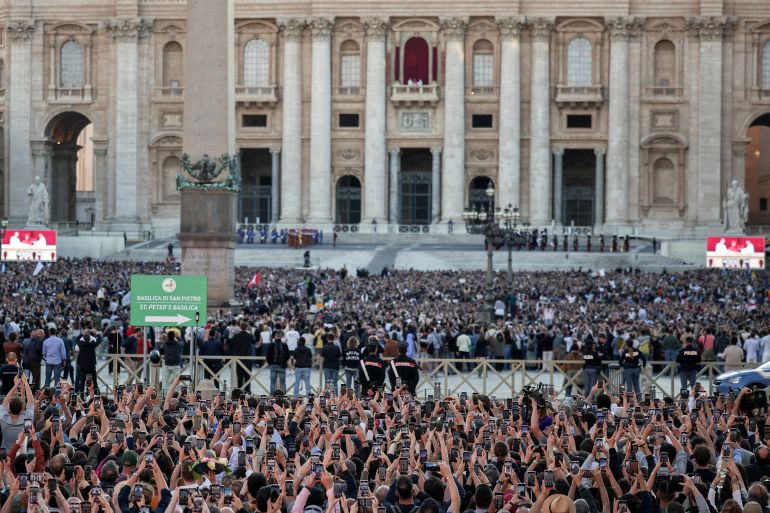
His own man
Born in Chicago, a midwestern city in the United States, Leo XIV spent more than two decades in Peru, where he acquired dual citizenship.
There, he worked in some of Peru’s poorest areas, and he eventually became the bishop of Chiclayo, in the country’s agricultural north. Then, in 2023, Pope Francis appointed him to lead a powerful office that manages bishops across the world.
Phil Pullella, a Vatican expert who has covered the papacy for more than four decades, said that background offers a degree of continuity with Francis, who hailed from Argentina and advocated against poverty.
“He knows about poverty in Latin America,” Pullella said of Leo XIV. “So, he’s not the same thing as if they had elected some cardinal of New York, for example.”
That continuity was likely appreciated by conservative camps at the Vatican, as well as liberal-leaning ones, Pullella added.
“He comes from the wealthy world, but he witnessed firsthand the problems of the Global South in a poor country,” he said.
Still, Pullella noted that the way Leo XIV dressed showed that “he is going to be his own man”.
Instead of the simple white cassock that Pope Francis wore in 2013 when he was elected, Leo XIII added a traditional red cape over his vest, symbolising the spiritual and temporal powers of his office.
“In a sense, he is going back a little bit to that kind of tradition,” Pullella said. “He would not have been elected had he not had the votes of the conservative bloc.”

A unifying figure
Leo XIV’s election came as a surprise to many. Many observers were betting on a new pope by nightfall, but few expected only three rounds of voting.
The crowd was stunned when white smoke started to pour out of the tiny chimney by early evening, at around 6:09pm local time (16:00 GMT).
That was the signal that — of the 133 cardinals under the age of 80 who were eligible to vote — a candidate had received the two-thirds majority needed to become pope.
This year’s conclave had the distinction of being the most international in the Vatican’s history: The participating cardinals hailed from more than 70 countries, representing divergent views for the Catholic Church’s future.
The diversity was part of the legacy of Pope Francis, who appointed cardinals from underrepresented countries like Laos and Haiti to broaden the church’s global appeal.
Francis spent 12 years as head of the Catholic Church, shaking up the establishment by adopting a distinct style and tone, focused on austerity and advocacy for marginalised populations.
The late pope’s efforts caused excitement among reformers but also dismay among conservatives, who accused him of diluting the Church’s teachings. Experts say that led to a deep polarisation within the church, with some members criticising Francis for decentralising the church’s authority.
Those experts point out that Leo XIV’s experience in the Roman Curia — the church’s government — was likely a selling point among conservative conclave voters looking for stability in the years ahead.
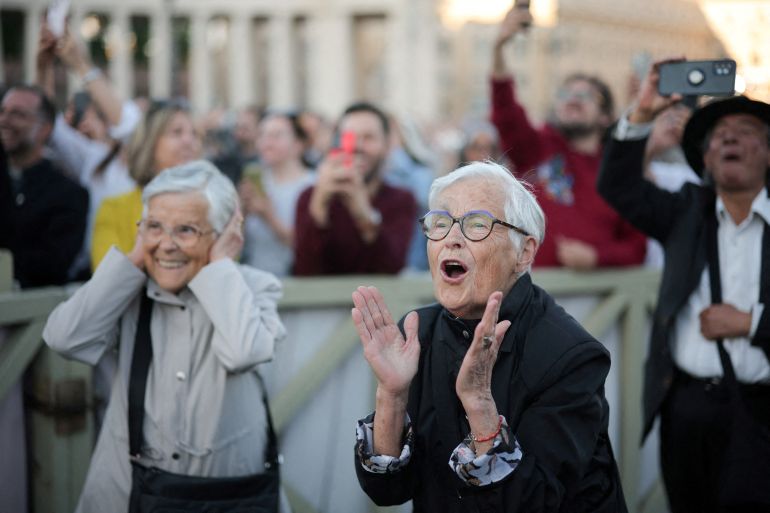
What’s in a name?
While Pope Leo XIV’s first moves are yet to be revealed, his choice of name is noteworthy.
Bruni, the Vatican spokesperson, noted that “Leo” is a direct reference to Pope Leo XIII, who adopted a new social doctrine in the late 19th century.
In 1891, Pope Leo XIII wrote an encyclical — or papal letter — known as the Rerum Novarum. It called on Catholics to address the “wretchedness” facing the working class, amid the upheavals of industrialisation and political changes like the unification of Italy.
That encyclical marked a radical new approach to workers, and it triggered the creation of Catholic newspapers, social cooperatives and banks — a social movement that is still alive today.
Bruni said the current Pope Leo hoped to draw a parallel to that time, with its technological revolutions.
“It is not a casual reference to the men and women of their work at a time of artificial intelligence,” Bruni explained.
Robert Orsi, a professor of religious studies at Northwestern University, said the name choice could also signify other historical parallels.
Leo XIII “strongly put down a movement called Americanism,” said Orsi.
“This movement was a kind of nationalist impulse within Catholicism, with national churches claiming to have their own identities, their own particular ways of doing things,” he explained. “And I think by choosing the name Leo XIV, this pope was, without a doubt, signalling a return to a global Catholicism.”
Pullella also believes it is noteworthy that, while Leo XIV mentioned his parishioners in Peru, he avoided highlighting his ties with the US.
“I think it’s very significant that he did not give a shout-out to the United States. He didn’t say, ‘I’m from America.’ He didn’t speak in English,” Pullella said.
That sent a message that “basically he’s not owned by the United States”, Pullella added. Leo XIV has previously been critical of the administration of US President Donald Trump over issues like nationalism and migration, just as the late Pope Francis was.
Still, Orsi predicted the Vatican under the new Pope Leo would be “subtle and wise” in how he deals with Trump in the years to come.
Contributor: Trump’s budget would lock in big-government spending and deficits
President Trump’s 2026 “skinny budget” is out, and at first glance it gives small-government advocates reason to cheer. It proposes deep cuts to domestic agencies, calls for eliminating redundant programs and gestures toward reviving federalism by shifting power and responsibility back to the states. It promises to slash overreaching “woke” initiatives, end international handouts and abolish bureaucracies that have outlived their usefulness.
But this budget is more rhetorical than revolutionary. As impressive as Trump’s envisioned cuts are — $163 billion worth — they lose luster because the version of the budget being considered in Congress also calls for increases to defense and border security spending, as well as the extension of the 2017 tax cuts. And for all its fiery declarations, the budget fails to truly confront the drivers of our fiscal crisis.
The budget does, thankfully, enshrine the Department of Government Efficiency’s acknowledgment that federal sprawl has become unmanageable. It proposes defunding environmental-justice programs, trimming National Institute of Health and National Science Foundation budgets, slashing the Department of Education and eliminating corporate welfare masquerading as climate policy.
It also rightly calls for cutting the National Endowments for the Arts and the Humanities — two anachronisms with no constitutional justification. Art and education don’t need federal management; they need freedom.
The budget retreats from Washington’s micromanagement of local affairs. Education grants, housing subsidies and green-energy projects are best cut and handled by state governments or the private sector. One-size-fits-all federal fixes for everything from school lunches to water systems have failed. Devolving authority isn’t just constitutional; it’s practical.
But these trims are wrapped in a document that nevertheless sustains a bloated government. Even with the reductions, 2026 discretionary spending would remain essentially unchanged at $1.6 trillion. In some respects, the budget enshrines Biden-era spending.
Then there’s defense. For all the “America First” rhetoric about maintaining a domestic focus, Trump’s budget does nothing to rein in the Pentagon’s fiscal free-for-all aimed at projecting power around the world. Quite the opposite: It proposes a 13% increase, pushing base defense spending past $1 trillion, including $892.6 billion in discretionary spending supplemented by $119.3 billion in mandatory spending and an additional $150 billion to be passed through Congress’ reconciliation process.
The Pentagon remains the largest federal bureaucracy and among the least accountable. It hasn’t passed a full audit since 2018, yet it gets a raise. If “peace through strength” means blank checks for defense contractors and redundant weapons systems, we need to rethink our definition of strength.
Consider the new F-47 fighter jet included in this budget. As Jack Nicastro notes in Reason magazine, this aircraft — billed as the most advanced ever built — is being developed to replace the F-35, which has been a taxpayer-funded boondoggle. So far, the F-35 has cost taxpayers more than $400 billion, far beyond the initial projected cost, and is expected to total $2 trillion over its lifespan. It’s suffered from technical failures (including at some point having problems flying in the rain) and some doubt it will ever be fully functional.
Considering the government incentives that gave us the F-35 mess still exist and given that aerial combat is shifting toward automated or remotely piloted systems, why would we believe our money will be better spent on the F-47?
Trump’s budget also boosts Homeland Security spending, propping up another sprawling bureaucracy. The president’s high-profile and problematic approach to deportation, while politically popular with his constituency, costs a lot of money. As the Cato Institute’s David Bier notes, indiscriminate deportations risk shrinking the workforce, reducing tax revenue and undercutting economic growth — all while ignoring the merit-based immigration reforms Trump claims to support.
Finally, there’s the ever-present elephant in the room: entitlements. Social Security, Medicare and Medicaid make up nearly 60% of spending and are the main drivers of our debt. Yet they are mostly untouched in the current fiscal sketch. The administration promises a more complete plan later to show where the savings would be found, but we’ve heard that before — and House Speaker Mike Johnson said on Tuesday that Republicans would block some of the most effective approaches to cutting Medicaid. But the math is straightforward. Without serious entitlement reform, no discretionary spending cuts can avert a debt crisis.
The bipartisan failure to govern responsibly isn’t just a policy lapse; it’s a moral one. Deficit spending and the burden of debt repayment crowds out private investment, fuels inflation and burdens future generations with obligations they have no say over. The U.S. is on track to exceed its World War II-era debt record by 2029. If this budget is truly the plan to reverse course, we’re in trouble.
Yes, the new Trump budget has bright spots, but those gains are neutralized by massive defense spending, costly immigration priorities and persistent gimmicks. At best, it maintains a flawed status quo. We don’t need more of the same; we need evidence of a serious turnaround. Until that happens, we have little choice but to assume that Trump’s budget is another big-government blueprint in small-government clothing.
Veronique de Rugy is a senior research fellow at the Mercatus Center at George Mason University. This article was produced in collaboration with Creators Syndicate.
Shedeur Sanders fan sues NFL for $100 million over draft fall
A football fan is suing the NFL for $100 million over the “severe emotional distress and trauma” that he suffered when former Colorado quarterback Shedeur Sanders unexpectedly dropped to the fifth round of last month’s draft.
In a lawsuit filed May 1 in the U.S. District Court for the Northern District of Georgia, Buffaloes fan Eric Jackson alleged the NFL had violated the Sherman Antitrust Act for collusion and possibly violated the Civil Rights Act for race discrimination, as well as consumer protection laws for “misrepresenting the nature of the drafting process and the qualifications of players.”
Jackson filed the case as a John Doe but revealed his identity by indicating he was representing himself. He describes himself in the lawsuit as “a dedicated fan of Colorado football” who “has closely followed Shedeur Sanders throughout the 2023 and 2024 seasons.” He included a request to file the complaint “in forma pauperis,” meaning he is unable to pay the filing fees.
Sanders, the son of Hall of Fame NFL player and Colorado coach Deion Sanders, was considered by some to be a potential first-round pick. Instead, he was bypassed until the Cleveland Browns claimed him at No. 144 overall, after they had already picked another quarterback, Oregon’s Dillon Gabriel, in the third round.
“Reports and leaked statements suggested that Sanders ‘tanked interviews,’ ‘wasn’t prepared,’ and ‘was too cocky,’ which contributed to a narrative that has unjustly harmed his reputation and potential as a player,” the lawsuit reads. “These slanderous statements reflect biases that influenced the NFL’s decision-making process, causing emotional distress and trauma to the Plaintiff as a fan and consumer.”
Jackson is also seeking “a formal acknowledgment from the NFL regarding the emotional distress caused by their actions and statements,” “a retraction of the slanderous statements made about Shedeur Sanders, along with an apology for any harm caused to his reputation,” and “implementation of fairer practices in the drafting process to ensure that talented players are recognized and given opportunities based on merit.”
The NFL did not immediately respond to The Times’ request for comment. Asked if the league had any reason to be concerned over the lawsuit, USC professor of law Clare Pastore told The Times, “Nope.”
She said the NFL’s lawyers will likely file a motion to dismiss the lawsuit for failure to sustain a claim, and that will likely be the end of the matter.
“This is ridiculous in many ways, but the biggest thing that I believe will immediately leap out at a judge is the concept of standing,” said Pastore, a former litigator whose specialties include civil rights law. “A supposed harm someone suffers in combination with some vast number of other people is not something that, that one person has standing to contest. … It’s what the courts call a generalized grievance. And a generalized grievance does not provide standing in federal court.”
She added: “It’s a little hard for me to see how anything about the Sanders situation could make out a race discrimination claim. I believe there may be race discrimination in certain aspects of the NFL. You look around the coaching ranks, the ownership ranks, they’re not very integrated. But in terms of players, it’s difficult to see how a claim could be made out that a player wasn’t drafted on race discrimination grounds.”
As for the $100 million in damages Jackson is seeking, Pastore called it “absurd.”
“That’s another aspect — it’s not quantifiable,” she said. “Like, how much is a fan harmed by a player that they want to see play not playing for their team, not playing for the team they want, not playing at all? It’s just not the stuff of which lawsuits are made.”





